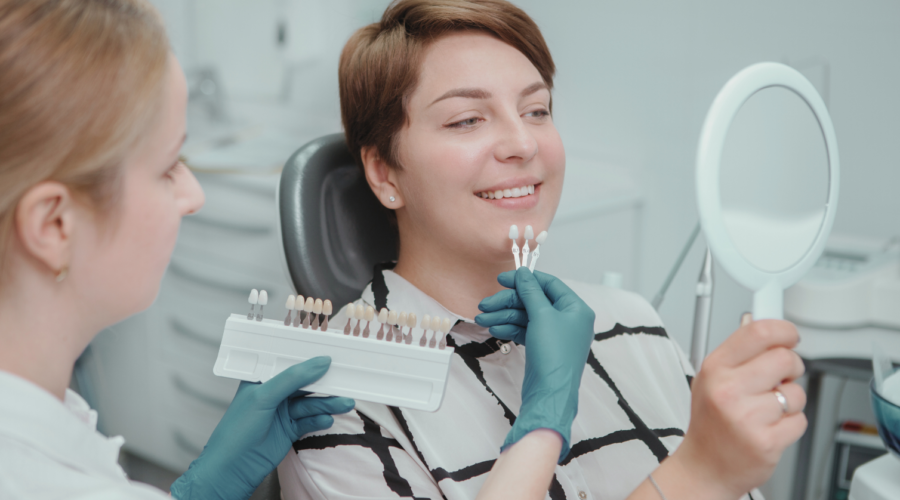The Evolution and Impact of Cosmetic Dentistry
Introduction
Cosmetic dentistry has grown exponentially over the past few decades, transforming from a niche service to a mainstream component of dental care. It focuses on enhancing the appearance of the teeth, gums, and smile, contributing to improved self-esteem and overall well-being. This article delves into the various procedures, advancements, and benefits of cosmetic dentistry.
Key Procedures in Cosmetic Dentistry
- Teeth Whitening: Teeth whitening is one of the most popular cosmetic dental procedures. It involves the use of bleaching agents to lighten the color of the teeth. In-office treatments use stronger bleaching agents and light activation to achieve quicker and more noticeable results, while at-home kits offer a convenient alternative with gradual results.
- Dental Veneers: Veneers are thin, custom-made shells made of porcelain or composite resin that cover the front surface of the teeth. They are used to correct a range of issues, including discolored, chipped, misaligned, or unevenly spaced teeth. Veneers provide a natural appearance and are highly durable.
- Dental Bonding: In dental bonding, a tooth-colored resin is applied and hardened with a special light, bonding the material to the tooth. This procedure is used to repair chipped or cracked teeth, improve the appearance of discolored teeth, and close gaps between teeth. It is a cost-effective and relatively quick solution.
- Dental Implants: Dental implants are a permanent solution for missing teeth. They involve the surgical placement of a titanium post into the jawbone, which serves as an artificial tooth root. Once the post integrates with the bone, a crown is attached, providing a natural-looking and functional replacement.
- Orthodontics: Cosmetic orthodontics focuses on improving the alignment of the teeth and bite. Clear aligners, such as Invisalign, have revolutionized this field, offering a discreet and comfortable alternative to traditional metal braces. These aligners are custom-made and gradually shift the teeth into the desired position.
- Gum Contouring: Gum contouring, also known as gum reshaping, involves the removal of excess gum tissue to improve the symmetry and appearance of the gum line. This procedure can enhance the smile’s aesthetics, particularly for patients with a “gummy” smile.
Advancements in Cosmetic Dentistry
- Digital Smile Design (DSD): DSD uses advanced digital technology to design and visualize the patient’s new smile before any treatment begins. High-resolution images and software allow dentists to create a precise treatment plan, ensuring that the final results meet the patient’s expectations.
- 3D Printing: 3D printing technology is increasingly used in cosmetic dentistry for the fabrication of crowns, bridges, dentures, and even surgical guides for implants. This technology allows for highly accurate and efficient production of dental prosthetics, reducing turnaround times and improving fit.
- Laser Dentistry: Lasers are used in various cosmetic procedures, such as teeth whitening, gum contouring, and the removal of tooth decay. Laser dentistry offers greater precision, less discomfort, and faster healing times compared to traditional methods.
- Minimally Invasive Techniques: Advances in materials and techniques have led to more conservative approaches in cosmetic dentistry. Minimally invasive procedures aim to preserve as much of the natural tooth structure as possible while achieving the desired aesthetic outcomes.
Benefits of Cosmetic Dentistry
- Enhanced Appearance: The primary benefit of cosmetic dentistry is the improvement in the appearance of the teeth and smile. A beautiful smile can boost self-confidence and positively impact personal and professional relationships.
- Improved Oral Health: Some cosmetic procedures, such as the replacement of missing teeth with implants, also contribute to better oral health. Properly aligned and well-maintained teeth are easier to clean, reducing the risk of decay and gum disease.
- Long-lasting Results: Many cosmetic dental treatments offer long-lasting results. For example, porcelain veneers and dental implants can last for many years with proper care, providing a durable solution to aesthetic concerns.
- Minimally Invasive Options: With advancements in technology, many cosmetic procedures are now minimally invasive, resulting in less discomfort and quicker recovery times for patients.
Conclusion
Cosmetic dentistry has become an integral part of modern dental practice, offering a wide range of procedures to enhance the appearance and function of the teeth and smile. Advances in technology have made these treatments more effective, efficient, and accessible than ever before. Whether seeking a brighter smile, straighter teeth, or a complete dental makeover, cosmetic dentistry provides solutions that can transform lives, boosting confidence and promoting overall well-being.

